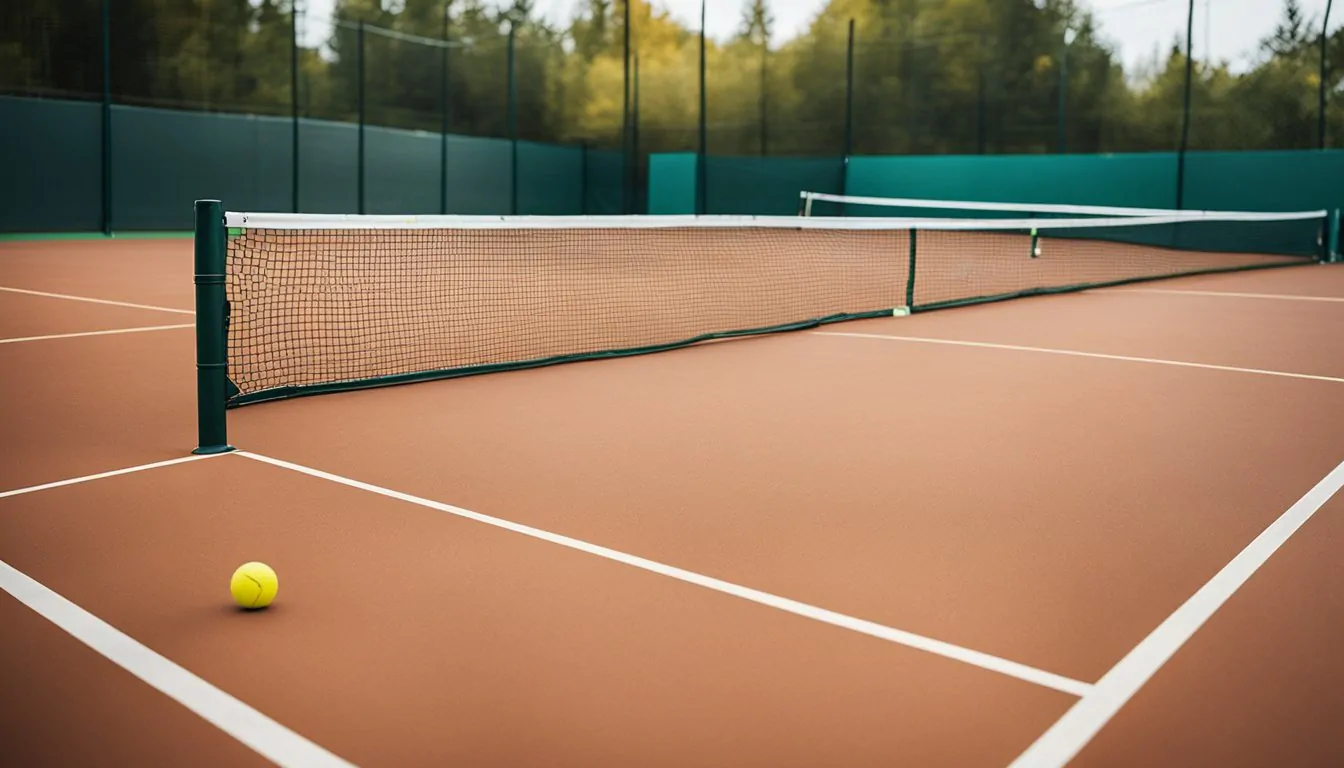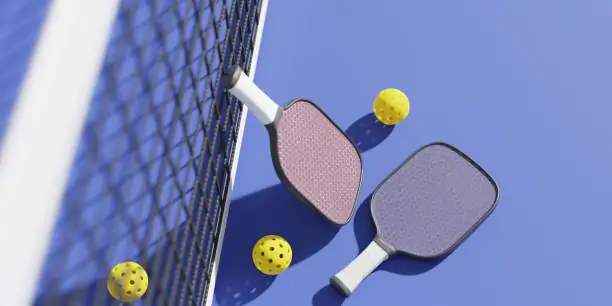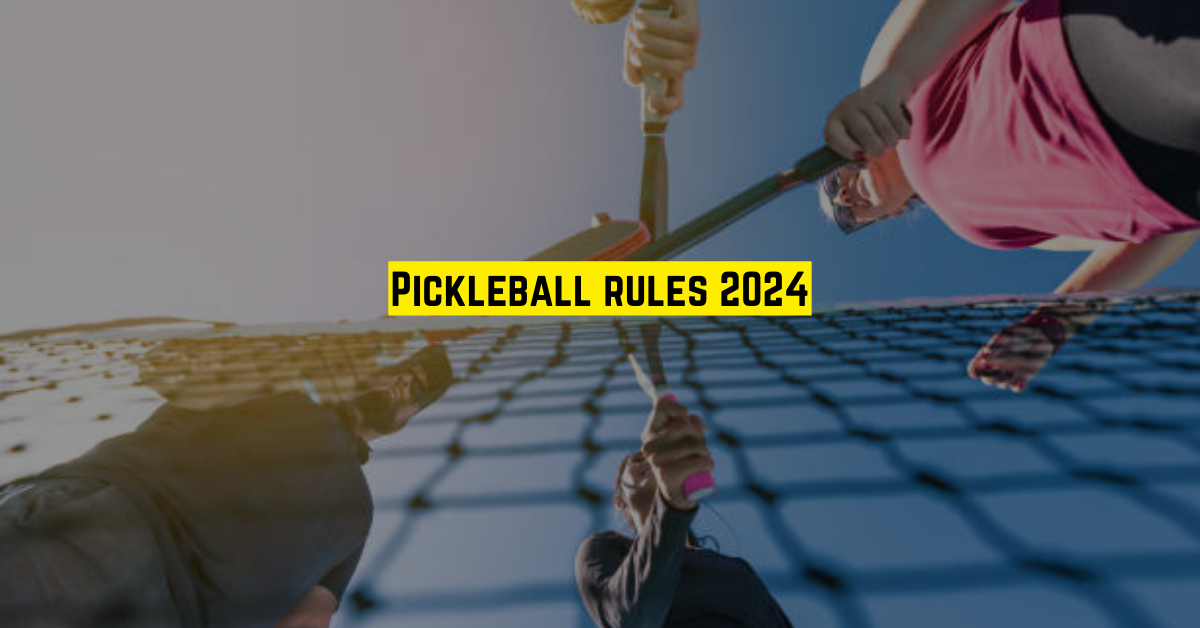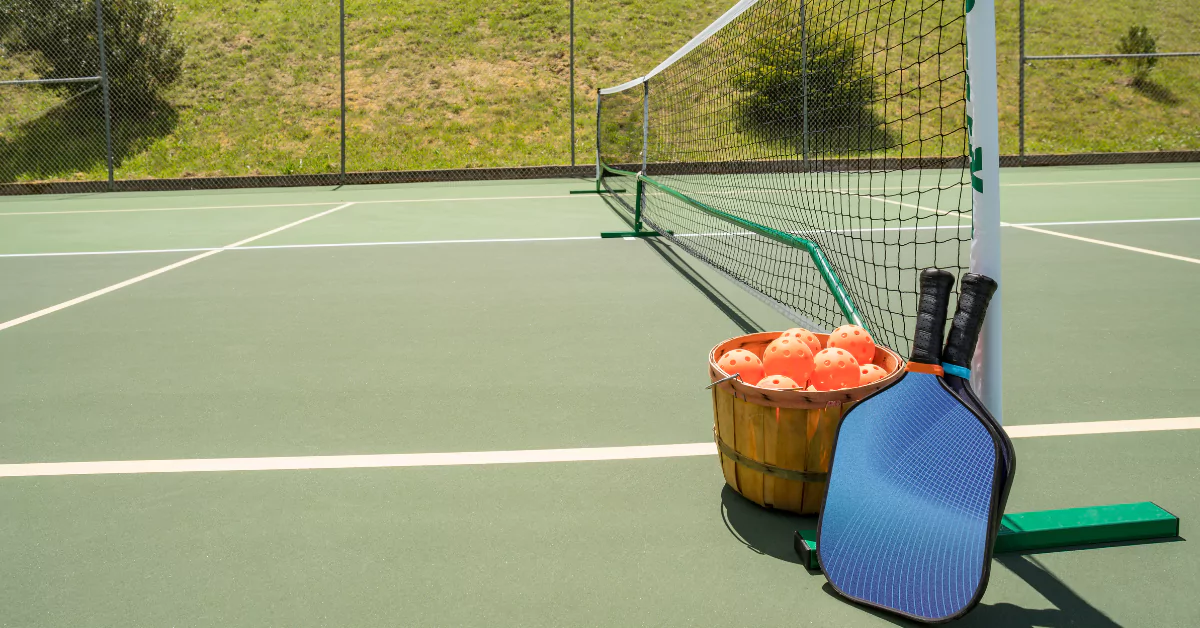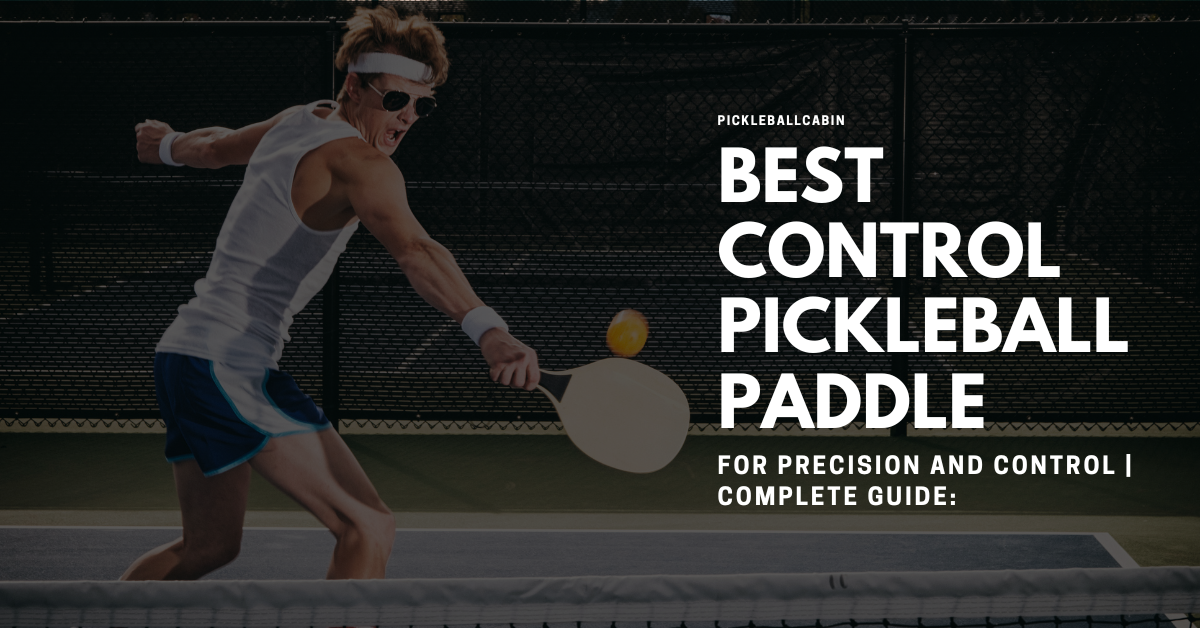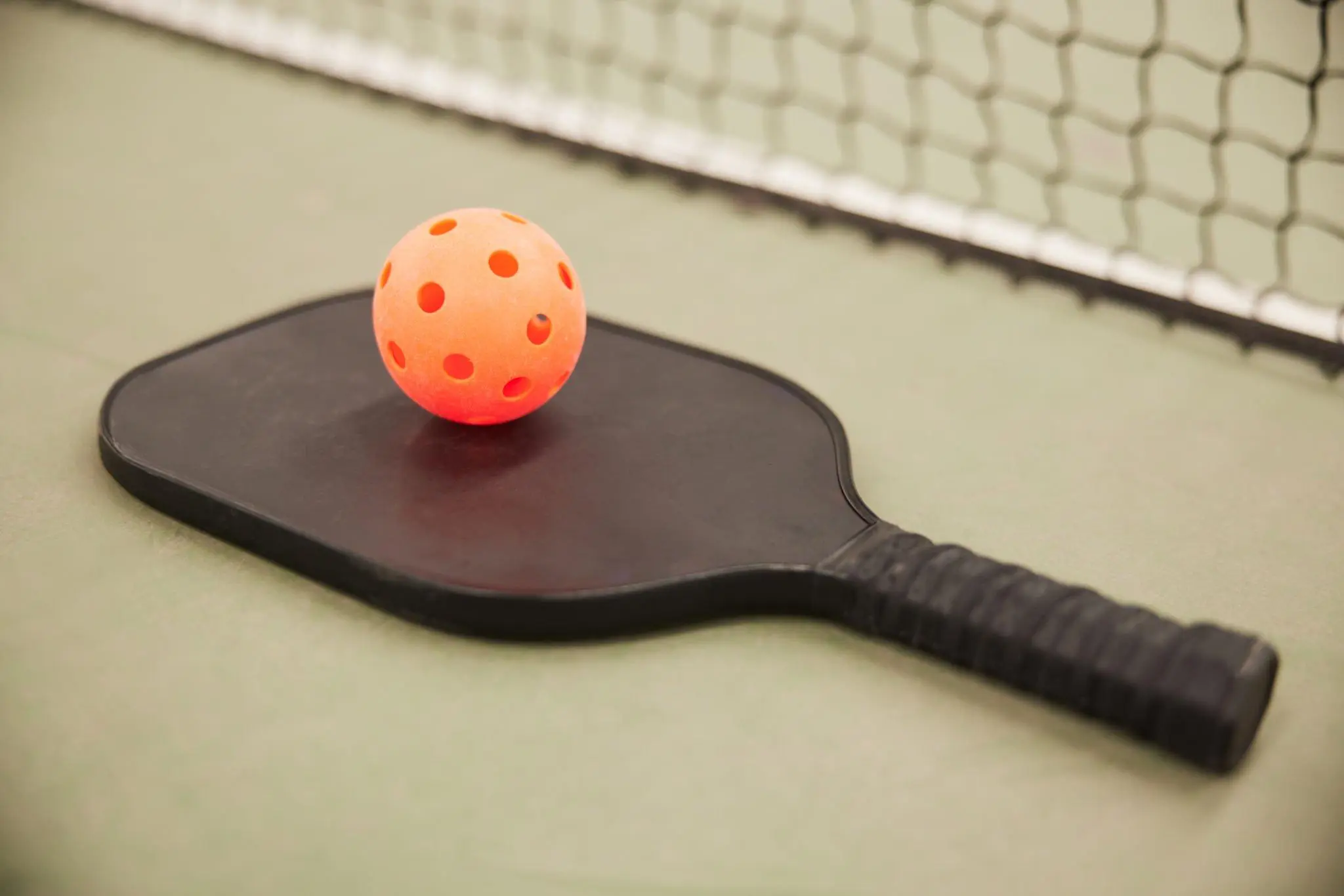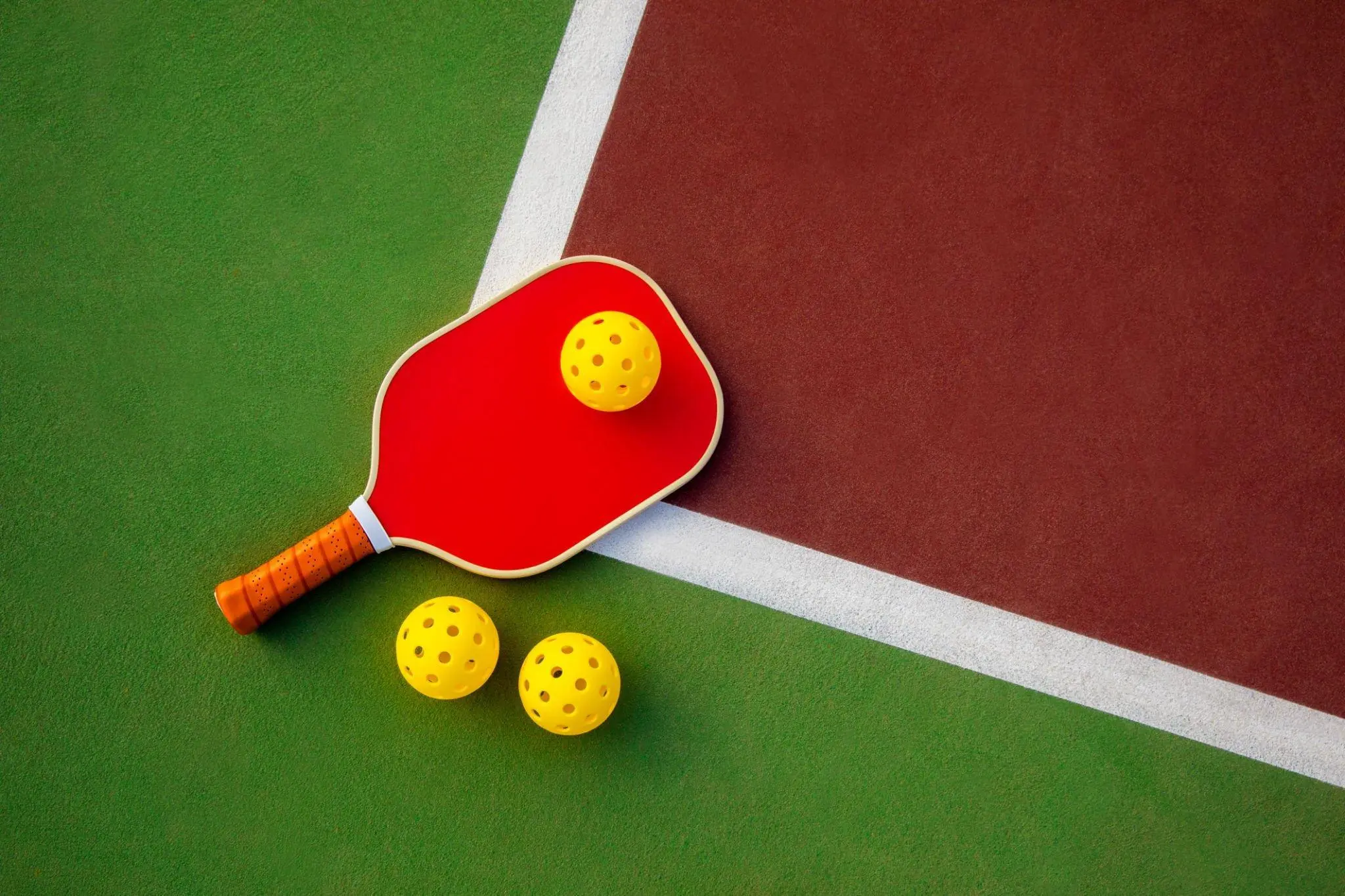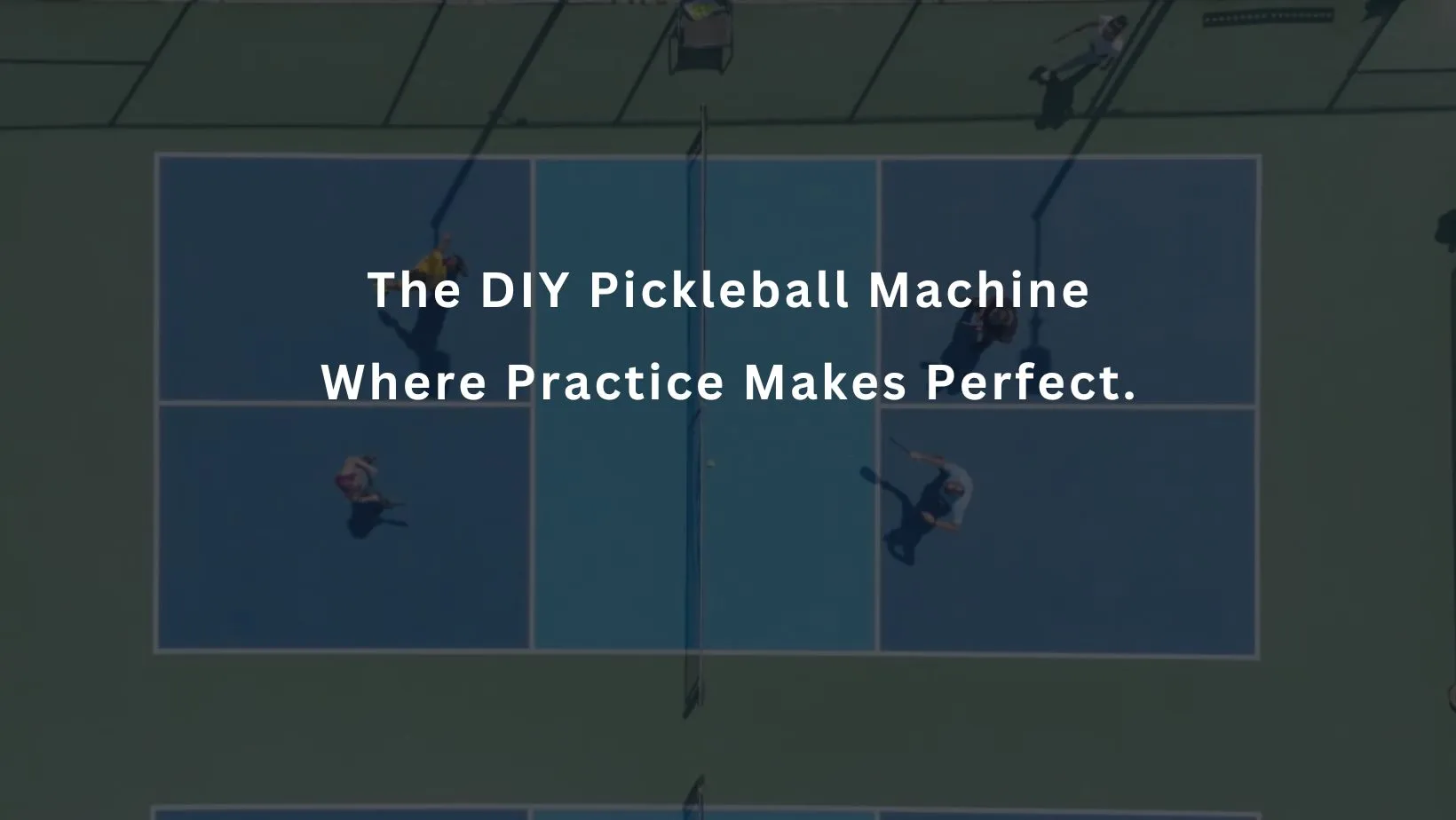As a pickleball enthusiast, I know firsthand the importance of having a well-designed and properly maintained pickleball court. A pickleball court is a specially designed playing surface for the sport of pickleball, which is a combination of tennis, badminton, and ping-pong. It is played on a court that is similar in size to a badminton court, with a net that is slightly lower than a tennis net.
The history of pickleball dates back to 1965 when it was first invented by Joel Pritchard, Bill Bell, and Barney McCallum. Since then, the sport has gained immense popularity and is played by millions of people worldwide.
A pickleball court has specific dimensions and markings that must be followed to ensure fair play. The court can be made of a variety of materials, including concrete, asphalt, or even carpet, depending on the location and budget.
Key Takeaways
- A pickleball court is a specially designed playing surface for the sport of pickleball.
- The court has specific dimensions and markings that must be followed to ensure fair play.
- The court can be made of a variety of materials, including concrete, asphalt, or even carpet.
History and Basics of Pickleball
Evolution of the Game
Pickleball is a sport that was invented in 1965 on Bainbridge Island, Washington, by Joel Pritchard, Bill Bell, and Barney McCallum. The game was created as a combination of badminton, tennis, and ping-pong. The name “pickleball” comes from Joel Pritchard’s dog, Pickles, who would chase after the ball and run away with it during the early stages of the game.
The first pickleball court was created on Bainbridge Island in 1967, and the first official pickleball tournament was held in 1976 at the South Center Athletic Club in Tukwila, Washington. Since then, the sport has grown in popularity and is now played by millions of people around the world.
Rules and Scoring
Pickleball is played on a court that is 20 feet wide and 44 feet long, with a net that is 36 inches high at the sidelines and 34 inches high in the center. The court is divided into two halves by a centerline and a non-volley zone, also known as the “kitchen,” which is a 7-foot area on either side of the net where players are not allowed to hit the ball in the air.
The game is played with a paddle and a plastic ball with holes, and the objective is to hit the ball over the net and into the opponent’s court without them being able to return it. The game is played to 11 points, and the winner must win by two points. In the event of a tie at 10-10, the game is played to 15 points.
There are several rules in pickleball that players must follow, including serving underhand, allowing the ball to bounce once on each side of the net before hitting it in the air, and not hitting the ball out of bounds. Players are also not allowed to step into the non-volley zone to hit the ball in the air, and if they do, it is considered a fault.
In conclusion, pickleball is a fun and exciting sport that is easy to learn and can be played by people of all ages and skill levels. Whether you are a beginner or an experienced player, pickleball is a great way to stay active and have fun with friends and family.
Pickleball Court Specifications
As a pickleball enthusiast, I know how important it is to have a court that meets regulation standards. Therefore, in this section, I will cover the standard dimensions for a regulation pickleball court, as well as some variations for backyard courts.
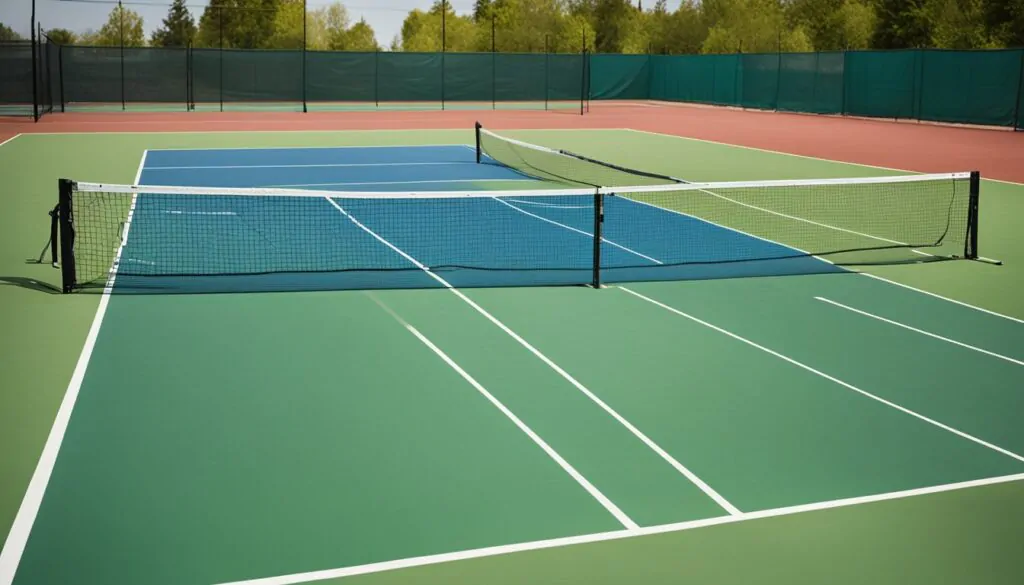
Standard Court Dimensions
A regulation pickleball court measures 20 feet wide and 44 feet long, with a center net height of 36 inches at the sidelines and 34 inches in the middle. The court is divided into two halves by the net, with each half measuring 20 feet by 22 feet. The non-volley zone, also known as the kitchen, is a seven-foot area on both sides of the net.
The court is marked with several lines, including the baseline, the service line, the non-volley line, and the centerline. These lines are used to determine the boundaries for serving, returning, and playing the ball during the game.
Backyard Court Variations
If you are planning to build a pickleball court in your backyard, you can adjust the dimensions to fit the available space. However, it is important to keep in mind that the court should still be rectangular and maintain the same proportions as a regulation court.
For example, a backyard court could measure 16 feet wide and 32 feet long, with a net height of 34 inches. The non-volley zone could still be seven feet on each side of the net. It is important to ensure that the court is level and free of any obstacles that could interfere with gameplay.
In conclusion, whether you are playing on a regulation court or a backyard court, following the standard dimensions and guidelines will ensure a fair and enjoyable game of pickleball.
Court Surface and Materials
As a pickleball player, I know that the court surface plays a crucial role in the overall playing experience. The surface type, material, and maintenance all affect the game’s speed, ball bounce, and player’s movement. In this section, I will discuss the different surface types and materials used in pickleball courts and how to maintain them.
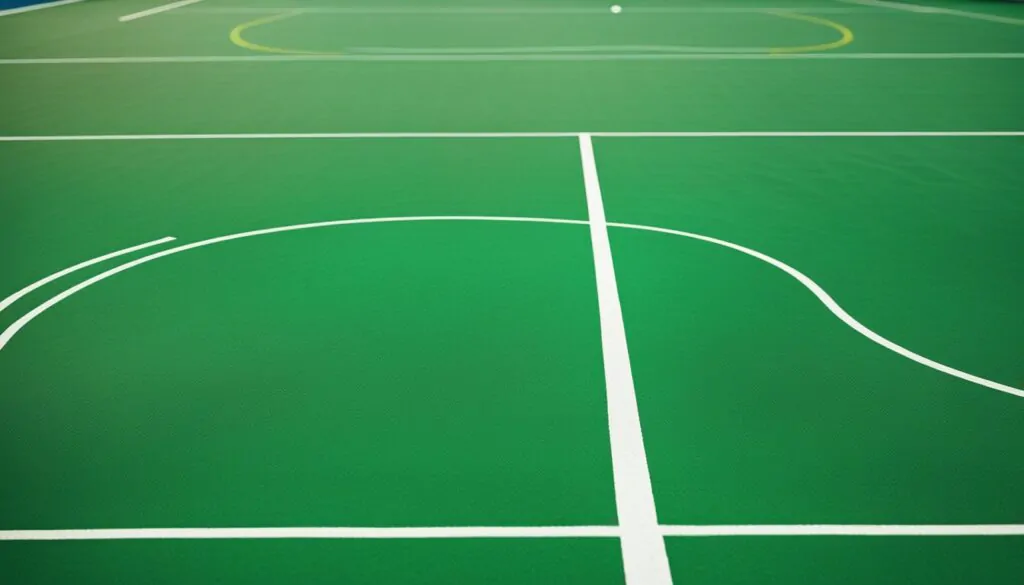
Surface Types
There are several surface types used for pickleball courts, including concrete, asphalt, acrylic, and wood. Concrete and asphalt are the most popular surfaces for outdoor pickleball courts because they are durable, easy to maintain, and provide consistent ball bounce. Acrylic surfaces offer better traction and grip, making them ideal for both indoor and outdoor courts. Wood surfaces are less common but provide a unique playing experience with their natural bounce and feel.
Each surface type has its advantages and disadvantages, and the choice depends on personal preference, location, and budget. Concrete and asphalt are the most affordable and widely available options, while acrylic and wood surfaces are more expensive and require professional installation.
Maintenance and Care
Pickleball courts require regular maintenance to ensure optimal playing conditions and longevity. The maintenance requirements vary depending on the surface type and location. Outdoor courts are exposed to the elements and require more maintenance than indoor courts.
For concrete and asphalt surfaces, regular cleaning with a pressure washer and mild detergent is essential to remove dirt, debris, and stains. Cracks should be repaired promptly to prevent further damage. Acrylic surfaces require more frequent cleaning and recoating to maintain their traction and grip.
Wood surfaces should be sealed and refinished regularly to prevent warping, splintering, and rotting. Indoor courts require regular cleaning and polishing to maintain their shine and slip resistance.
In conclusion, the court surface and materials significantly impact the playing experience and require regular maintenance and care. Pickleball players should choose a surface type that suits their needs and budget and follow the manufacturer’s maintenance guidelines to ensure optimal playing conditions.
Designing a Pickleball Court
As a pickleball enthusiast, I know that designing a pickleball court is an important aspect of the game. A well-designed court not only enhances the playing experience but also helps players to improve their skills. In this section, I will share my knowledge on how to design a pickleball court.
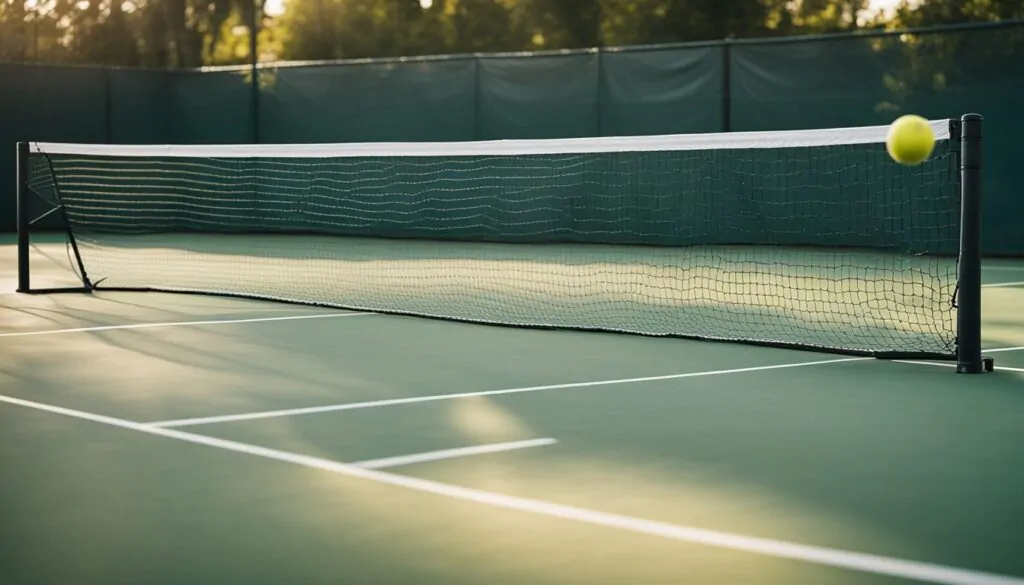
Layout Planning
The first step in designing a pickleball court is to plan the layout. According to The Pickleball Freak, a standard pickleball court is 20 feet wide and 44 feet long, with a net height of 36 inches at the sidelines and 34 inches at the center. It is important to ensure that the court is level and free of obstructions.
Multiple pickleball court layouts are possible, depending on the space available. For example, two pickleball courts can be placed side by side on a single tennis court. Alternatively, four pickleball courts can be placed on a single basketball court. It is important to ensure that the dimensions of the court are maintained, regardless of the layout.
Accessory Considerations
In addition to the court itself, there are several accessories that can enhance the playing experience. For example, windscreens can be installed to reduce wind interference and provide privacy. Schmidt Architects suggest that windscreens should be installed on the north and west sides of the court to reduce sun glare.
Another accessory to consider is lighting. If the court will be used in the evenings, it is important to ensure that there is adequate lighting. LED lights are a popular choice for pickleball courts because they are energy-efficient and provide bright, even lighting.
Finally, it is important to consider the surface of the court. A smooth, non-slip surface is essential for safe and enjoyable play. Asphalt, concrete, and acrylic surfaces are all suitable for pickleball courts. It is important to choose a surface that is durable and easy to maintain.
In conclusion, designing a pickleball court requires careful planning and consideration. By following the guidelines outlined in this section, you can create a court that is safe, enjoyable, and enhances the playing experience.
Indoor vs Outdoor Courts
When it comes to playing pickleball, one of the main decisions players have to make is whether to play indoors or outdoors. Both options have their advantages and disadvantages, and it ultimately comes down to personal preference. In this section, I will discuss the differences between indoor and outdoor courts, as well as the advantages of each.

Advantages of Indoor Play
Indoor pickleball courts have a few advantages over outdoor courts. Firstly, indoor courts are not affected by weather conditions, which means that players can play all year round, regardless of the weather outside. This makes indoor courts a great option for players who live in areas with extreme weather conditions.
Secondly, indoor courts have a smoother surface than outdoor courts, which allows for faster gameplay. The surface is usually made of wood or synthetic material, which provides a consistent bounce and allows players to move quickly around the court.
Lastly, indoor courts have better lighting than outdoor courts, which makes it easier for players to see the ball and play accurately. This is especially important for players who have trouble seeing in low light conditions.
Outdoor Court Features
Outdoor pickleball courts also have their advantages. Firstly, outdoor courts are usually free to play on, whereas indoor courts often require a fee or membership. This makes outdoor courts a great option for players who are on a budget or who want to play casually.
Secondly, outdoor courts are usually larger than indoor courts, which allows for more movement and a wider range of shots. Outdoor courts are also typically made of concrete or asphalt, which provides a different playing surface than indoor courts.
Lastly, outdoor courts allow players to enjoy the fresh air and sunshine while playing. This can be a great way to get some exercise and enjoy the outdoors at the same time.
Overall, both indoor and outdoor courts have their advantages and disadvantages. It ultimately comes down to personal preference and what works best for each individual player.
Building Your Own Court
As a pickleball enthusiast, I know how important it is to have a court that meets your needs. Building your own court can be a great way to ensure that you have a court that is tailored to your needs and preferences. Here are some things to consider when building your own pickleball court.
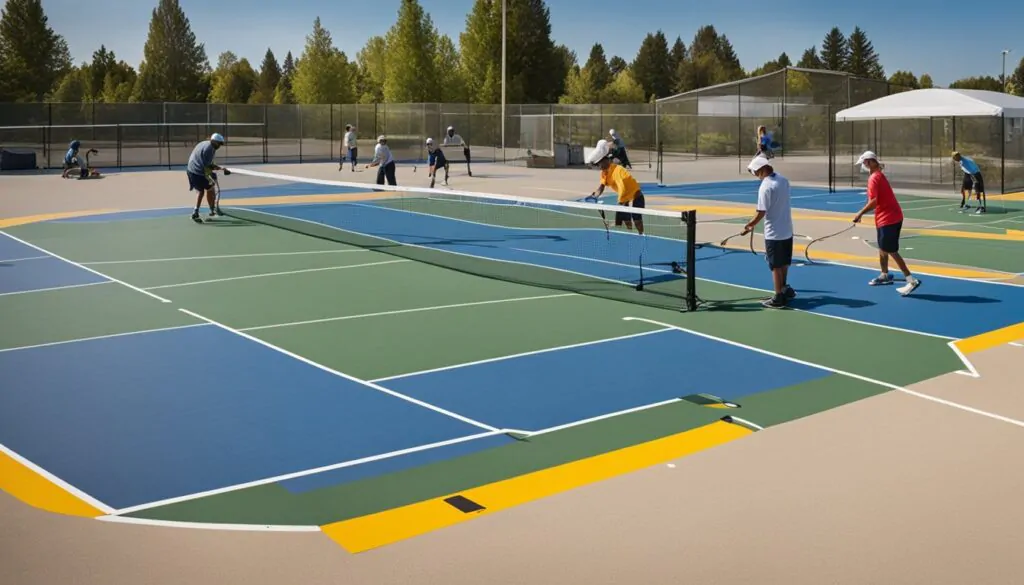
DIY Installation Tips
If you are planning to build your own pickleball court, there are a few things that you should keep in mind. First, you need to decide on the location of your court. Ideally, you want a flat, level surface that is free from any obstructions. The standard size for a pickleball court is 44 feet long and 20 feet wide, so make sure that you have enough space for your court.
Once you have determined the location of your court, you will need to purchase the necessary materials. This will include things like fencing, netting, and court lines. You can purchase these materials from a variety of sources, including online retailers and sporting goods stores.
When it comes to actually building your court, there are a few different methods that you can use. Some people choose to pour a concrete slab and paint the court lines on top, while others prefer to use a modular court system that can be assembled on site.
Professional Installation
If you don’t have the time or expertise to build your own court, you can always hire a professional to do it for you. There are a number of companies that specialize in building pickleball courts, and they can help you design and install a court that meets your needs.
When choosing a professional installation company, it’s important to do your research and choose a company that has a good reputation. Look for companies that have experience building pickleball courts and that use high-quality materials.
Overall, building your own pickleball court can be a great way to ensure that you have a court that meets your needs. Whether you choose to do it yourself or hire a professional, make sure that you take the time to plan out your court and choose the right materials. With the right approach, you can have a pickleball court that you will enjoy for years to come.
Regulations and Compliance
As a pickleball player, it is essential to understand the regulations and compliance standards for pickleball courts. There are official court standards set by the USA Pickleball Association, but local regulations may also apply.
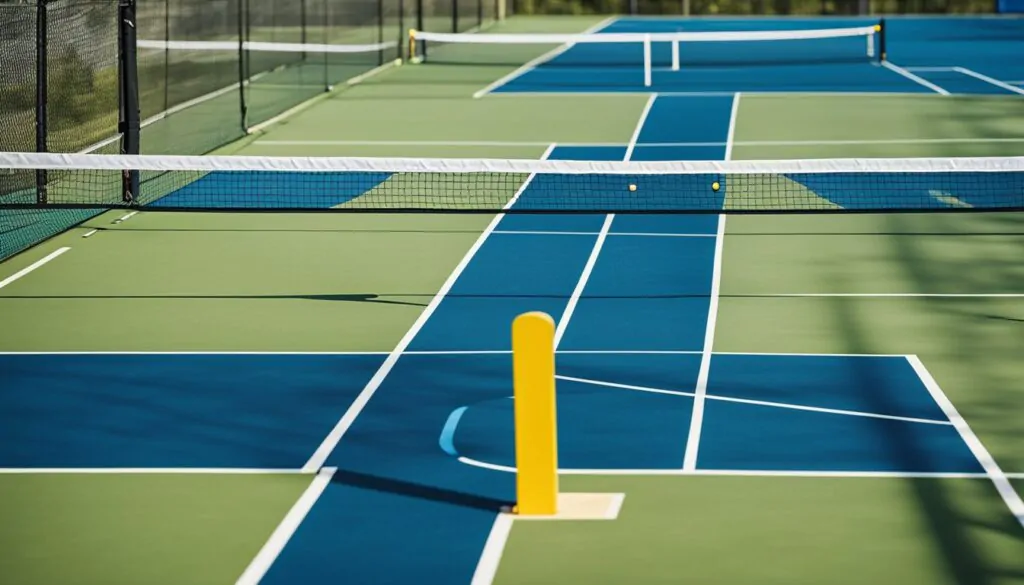
Official Court Standards
According to the USA Pickleball Association, the standard pickleball court measures 44 feet by 20 feet for both singles and doubles play. The court is divided into sections by lines, including the baseline, sideline, centerline, and non-volley zone line. These lines help players maintain their position and navigate the court during gameplay. The non-volley zone, also known as the “kitchen,” is a 7-foot zone on each side of the net where players are not allowed to hit the ball in the air.
Additionally, the surface of the court should be free of any cracks, holes, or other irregularities that could cause injury to players. The court should also have proper lighting for night play.
Adapting to Local Regulations
While the official court standards are a good starting point, it is important to be aware of any local regulations that may apply. Some cities or communities may have specific requirements for court size, surface material, or lighting. It is important to research and follow these regulations to avoid any legal or safety issues.
In some cases, local regulations may require modifications to the court layout or equipment. For example, some communities may require additional fencing or padding around the court to ensure player safety. It is important to be aware of these requirements and make any necessary modifications to the court before play.
Overall, understanding the regulations and compliance standards for pickleball courts is essential for maintaining a safe and enjoyable playing experience. By following official court standards and adapting to local regulations, players can ensure that they are playing on a court that is both safe and legal.
Maintenance and Upkeep
As a pickleball player and court owner, I know that proper maintenance and upkeep of the court is essential for player safety, court longevity, and a better playing experience. In this section, I will cover routine cleaning and long-term care of the pickleball court surface.
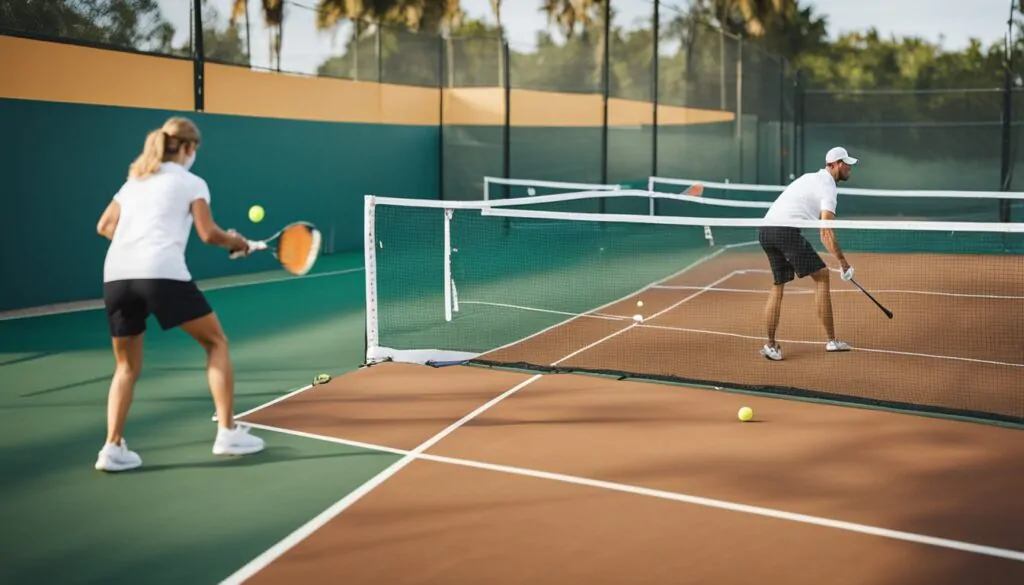
Routine Cleaning
Routine cleaning of the pickleball court surface is crucial to ensure that the court remains in top shape. Dirt, dust, and debris can accumulate on the court surface, leading to a decrease in court performance, such as decreased ball bounce and increased risk of accidents.
To clean the court surface, I recommend using a broom or blower to remove any loose debris. For more stubborn dirt and stains, a pressure washer can be used. It is important to avoid using harsh chemicals that can damage the court surface. Instead, use a mild soap and water solution to clean the court surface.
Long-Term Care
Long-term care of the pickleball court surface is also essential to ensure that the court remains in top shape for years to come. Neglecting long-term care can lead to cracks, uneven surfaces, and other issues that can be costly to repair.
To maintain the court surface, I recommend inspecting it regularly for any damage or hazards. Repair any cracks as soon as they appear using an appropriate concrete filler material. Resurface the court as needed to maintain a smooth and even surface.
Proper court drainage is also important to prevent standing water, which can damage the court surface and create a slip hazard. Regularly inspect and maintain the court drainage system to ensure proper water flow.
In conclusion, routine cleaning and long-term care are both essential for maintaining a safe and enjoyable pickleball court surface. By following these maintenance and upkeep tips, you can ensure that your court remains in top shape for years to come.
